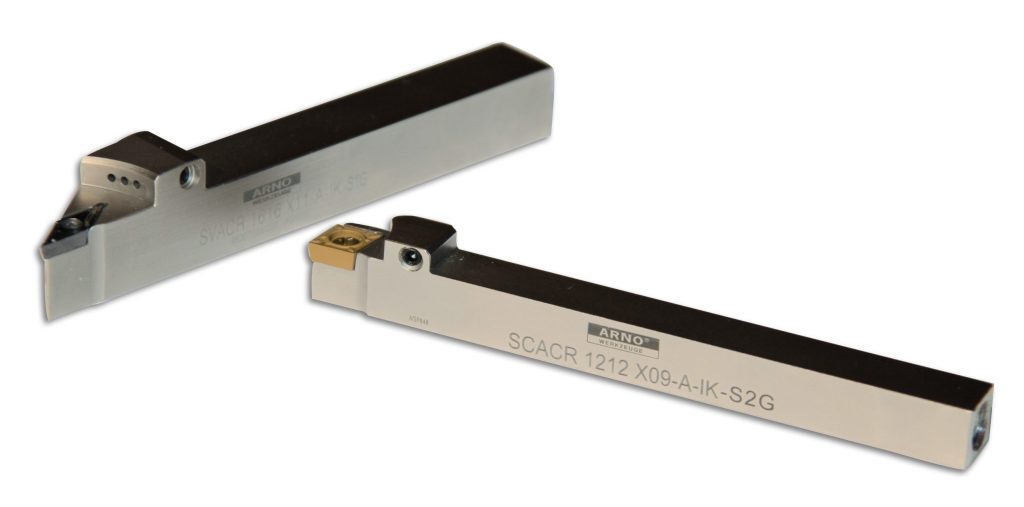Expanded Program for Swiss-Style CNC Automatic Lathes
Expanded Program for Swiss-Style CNC Automatic Lathes
Arno Werkzeuge USA has expanded its Swiss-style program of cutting tools, holders, inserts and through-coolant systems for Swiss CNC auto lathes. Applications for Swiss auto lathes are known for their unique machining requirements for extremely long, thin, small parts with great precision and accuracy and, therefore, require very specific tooling.

Arno Werkzeuge USA has expanded its Swiss-style program of cutting tools, holders, inserts and through-coolant systems for Swiss CNC auto lathes. Applications for Swiss auto lathes are known for their unique machining requirements for extremely long, thin, small parts with great precision and accuracy and, therefore, require very specific tooling.
ARNO Werkzeuge has designed and manufactured cutting tools specifically for CNC Swiss auto lathes. Its offering of Swiss-style tooling extends across its entire family of products for grooving, turning, milling and drilling operations.
Arno USA's SA holders and inserts features a modular grooving system with a single basic toolholder, which turns into different tool variants by simply changing the support blade and clamp and is popular for grooving and parting-off operations. The Arno Swiss program applies to specific area of the SA line with its HSA-U holder range. Typically, with most holders, the clamping screw is on the top of the unit. However, with HSA-U the clamp features a clamp and screw that mounts on the bottom of the holders. This offers easy handling and clamping for the tighter spacing and machining requirements of Swiss-style auto lathes. The SA range also includes the standard HSA monoblock holder with the clamp on top.
Typically, Swiss-style lathes have smaller machining requirements and utilize bar sizes of no larger than 1¼" in diameter. For ARNO's SA Swiss-style program, insert widths starting from 0.059" (1.5 mm). Shank sizes ranging from 3/8" (8 mm) up to ¾" (20 mm). Another unique feature of ARNO's Swiss-style program for the SA range includes through-coolant tooling capabilities with sizes starting from 0.079" (2 mm).





